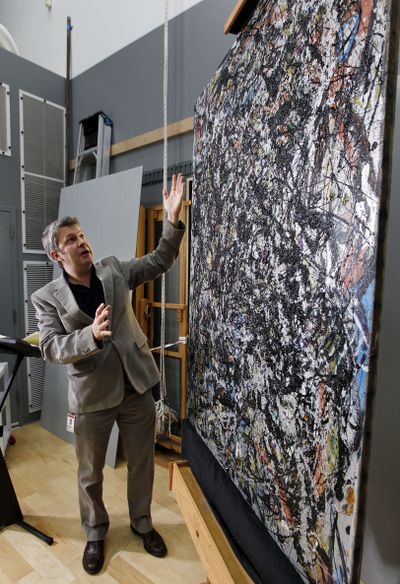Seattle Art Museum fixing Pollock work

SEATTLE – The Seattle Art Museum is restoring a 1947 Jackson Pollock painting that was altered in the 1970s with a coat of varnish.
Work started last summer in the museum’s conservation studio on “Sea Change.” It’s a cornerstone work in the museum’s permanent collection that represents Pollock’s transition to a drip technique.
Reporters and photographers were invited Tuesday to see how recovering the original surface of “Sea Change” reveals the method and intent of the artist who died in 1956.
The restoration is especially complicated because of the multiple types of media and the depth of the surface, said Nicholas Dorman, chief conservator for the museum.
The painting is about 4-by-5 feet in size and includes many layers, beginning with a fine weave canvas, then a white oil base, brushed color images, aluminum paint drips, black drips with imbedded gravel and then dabs of pure color.
Several types of paint are used, including oil, house and other commercial paints and possibly an early acrylic paint.
It’s taking months of work as Dorman carefully uses solvents to remove four-decade old varnish. The restoration also requires a certain level of detective work and research to establish as much information as possible about the original piece. That includes whether it was painted on an easel or on the floor, looking at old X-rays for further details and at old photos of Pollock at work to try to glean any possible additional information that could be helpful.
Because of how the varnish works with the original materials over time, it was important to do this work now, Dorman said.
The restoration is additionally complicated because some of the materials by their nature are shiny and others are matte. So, as Dorman works removing the shiny varnish, the changes are subtle. And because of the multiple materials, the restoration process itself becomes a research project to find what solvents work best for such restoration – information that is expected to be valuable to others working in the field.
The work is funded by the Bank of America’s Art Conservation Project.